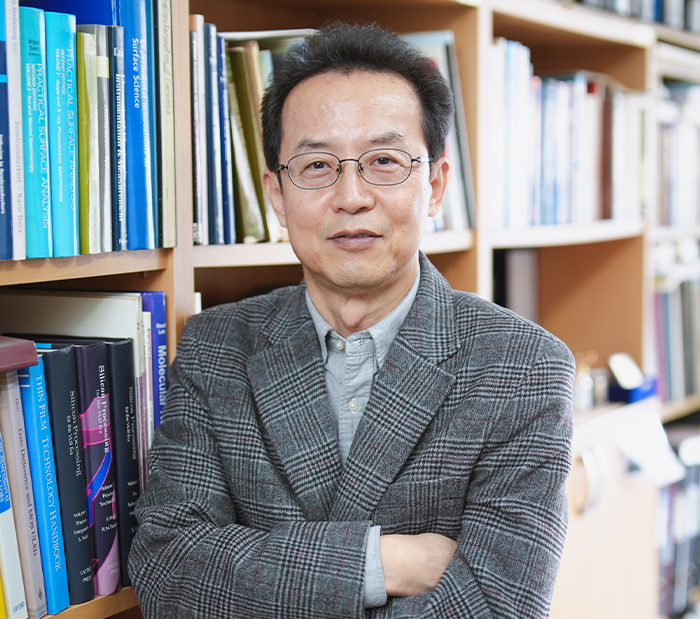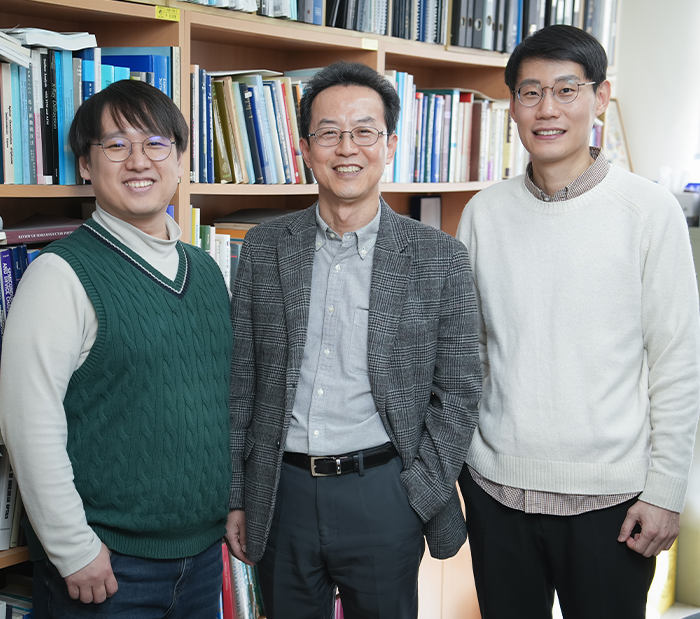Predicting and demonstrating of hidden metastable phase in transition metal oxide
Advanced Materials Science and Engineering LEE, JAICHAN Prof. · Bongwook Chung
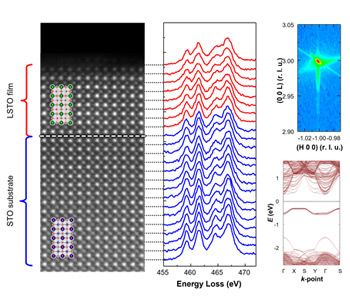
-
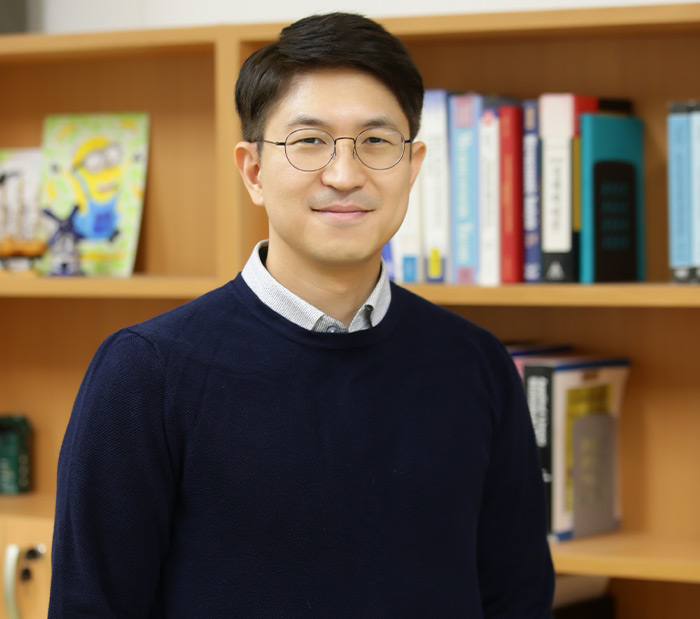
Consumer Science PAK, TAE-YOUNG Prof. ·Yu Lim Lee in the Department of Consumer Science
Modeling consumer acceptance of emerging mobility technologies
Drs. Tae-Young Pak and Yu Lim Lee in the Department of Consumer Science have announced the research findings on the consumer acceptance of innovative mobility technologies, such as Urban Air Mobility (UAM) and Demand-Responsive Transport (DRT), through joint research with the United Nations ESCAP (Dr. Changju Lee), the Korea Transport Institute (Dr. Bumjoon Bae), and the Korea Institute of Civil Engineering and Building Technology (Drs. Intaek Jung and Bong-Joo Jang). The initial diffusion of innovative mobility technology should consider technical efficiency as well as its acceptance among potential consumers. In order for a new transportation system to be successfully integrated, it should be able to move travelers quickly and efficiently and operate in a safe condition under relevant laws and regulations. As the widespread adoption of new mobility service hinges on user demand, it is important to examine how potential consumers perceive emerging mobility technologies and explore the mechanism that leads to initial trust and the intention to use. This study interviewed individuals aged 19–64 years living in metropolitan areas using structured questionnaires and demonstration videos. Results showed that social influence and initial trust were significantly related to usage intention, which, along with performance expectancy, facilitating conditions, and structural assurance, leads to positive attitudes toward emerging mobility technologies. Initial trust was dependent on all six constructs considered, but most strongly on structural assurance. These findings highlight the role of institutional safety nets, such as regulations and legal resources, in increasing initial trust and promoting the initial diffusion of emerging mobility services. These findings were published in the leading journals in technology management and transportation engineering, such as Technological Forecasting and Social Change (IF 12.0, JCR 3.2%) and Journal of Public Transportation (IF 37.7, JCR 1.4%). They will also be referenced for the development of the UN's transportation planning policies in Asia. This research was funded by the National Research Foundation of Korea and a collaborative research partnership between the UN ESCAP and the Korea Institute of Civil Engineering and Building Technology. Title: Societal acceptance of urban air mobility based on the technology adoption framework Journal: Technological Forecasting and Social Change DOI: https://doi.org/10.1016/j.techfore.2023.122807 Title: Modeling public acceptance of demand-responsive transportation: An integrated UTAUT and ITM framework Journal: Journal of Public Transportation DOI: https://doi.org/10.1016/j.jpubtr.2023.100067 Figure 1. UAM Operational Conceptual Chart (Source: KAC) Figure 2. Tilt prop Type UAM Concept (Source: KAC) Figure 3. Incheon Mobility On Demand(I-MOD) (Source: Incheon, Hyundai Motor Company I-MOD)
- No. 234
- 2023-11-23
- 1938
-
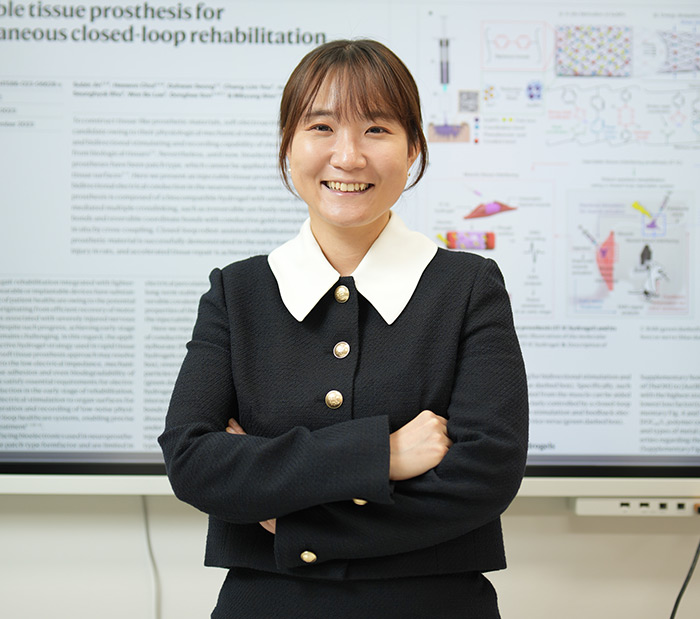
Biomedical Engineering SHIN, MIKYUNG Prof. ·Professor Donghee Son
New “injectable tissue prosthesis coupled with closed-loop bioelectronic system” to aid in muscle regeneration
In a recent publication in the journal Nature, researchers from the Institute of Basic Science (IBS) in South Korea have made significant strides in biomaterial technology and rehabilitation medicine. They've developed a novel approach to healing muscle injury by employing “injectable tissue prosthesis” in the form of conductive hydrogels and combining it with a robot-assisted rehabilitation system. Let’s imagine you are swimming in the ocean. A giant shark approaches and bites a huge chunk of meat out of your thigh, resulting in a complete loss of motor/sensor function in your leg. If left untreated, such severe muscle damage would result in permanent loss of function and disability. How on Earth will you be able to recover from this kind of injury? Traditional rehabilitation methods for these kinds of muscle injuries have long sought an efficient closed-loop gait rehabilitation system that merges lightweight exoskeletons and wearable/implantable devices. Such assistive prosthetic system is required to aid the patients through the process of recovering sensory and motor functions linked to nerve and muscle damage. Unfortunately, the mechanical properties and rigid nature of existing electronic materials render them incompatible with soft tissues. This leads to friction and potential inflammation, stalling patient rehabilitation. To overcome these limitations, the IBS researchers turned to a material commonly used as a wrinkle-smoothing filler, called hyaluronic acid. Using this substance, an injectable hydrogel was developed for “tissue prostheses”, which can temporarily fill the gap of the missing muscle/nerve tissues while it regenerates. The injectable nature of this material gives it a significant advantage over traditional bioelectronic devices, which are unsuitable for narrow, deep, or small areas, and necessitate invasive surgeries. Thanks to its highly “tissue-like” properties, this hydrogel seamlessly interfaces with biological tissues and can be easily administered to hard-to-reach body areas without surgery. The reversible and irreversible crosslinks within the hydrogel adapt to high shear stress during injection, ensuring excellent mechanical stability. This hydrogel also incorporates gold nanoparticles, which gives it decent electrical properties. Its conductive nature allows for the effective transmission of electrophysiological signals between the two ends of injured tissues. In addition, the hydrogel is biodegrdable, meaning that the patients do not need to get surgery again. With mechanical properties akin to natural tissues, exceptional tissue adhesion, and injectable characteristics, researchers believe this material offers a novel approach to rehabilitation. Next, the researchers put this novel idea to the test in rodent models. To simulate volumetric muscle loss injury, a large chunk of muscle has been removed from the hind legs of these animals. By injecting the hydrogel and implanting the two kinds of stretchable tissue-interfacing devices for electrical sensing and stimulation, the researchers were able to improve the gait in the “injured” rodents. The hydrogel prosthetics were combined with robot assistance, guided by muscle electromyography signals. Together, the two helped enhance the animal's gait without nerve stimulation. Furthermore, muscle tissue regeneration was effectively improved over the long term after the conductive hydrogel was used to fill muscle damage. The injectable conductive hydrogel developed in this study excels in electrophysiological signal recording and stimulation performance, offering the potential to expand its applications. It presents a fresh approach to the field of bioelectronic devices and holds promise as a soft tissue prosthesis for rehabilitation support. Emphasizing the significance of the research, Professor Mikyung Shin notes, “We've created an injectable, mechanically tough, and electrically conductive soft tissue prosthesis ideal for addressing severe muscle damage requiring neuromusculoskeletal rehabilitation. The development of this injectable hydrogel, utilizing a novel cross-linking method, is a notable achievement. We believe it will be applicable not only in muscles and peripheral nerves but also in various organs like the brain and heart.” Professor Donghee Son added, “In this study, the closed-loop gait rehabilitation system entailing tough injectable hydrogel and stretchable and self-healing sensors could significantly enhance the rehabilitation prospects for patients with neurological and musculoskeletal challenges. It could also play a vital role in precise diagnosis and treatment across various organs in the human body.” The research team is currently pursuing further studies to develop new materials for nerve and muscle tissue regeneration that can be implanted in a minimally invasive manner. They are also exploring the potential for recovery in various tissue damages through the injection of the conductive hydrogel, eliminating the need for open surgery. [Figure 1] Institute of Basic Science(IBS) researchers developed a way in employing “injectable tissue prosthesis” in the form of conductive hydrogels and combining it with a robot-assisted rehabilitation system.
- No. 233
- 2023-11-08
- 1889
-
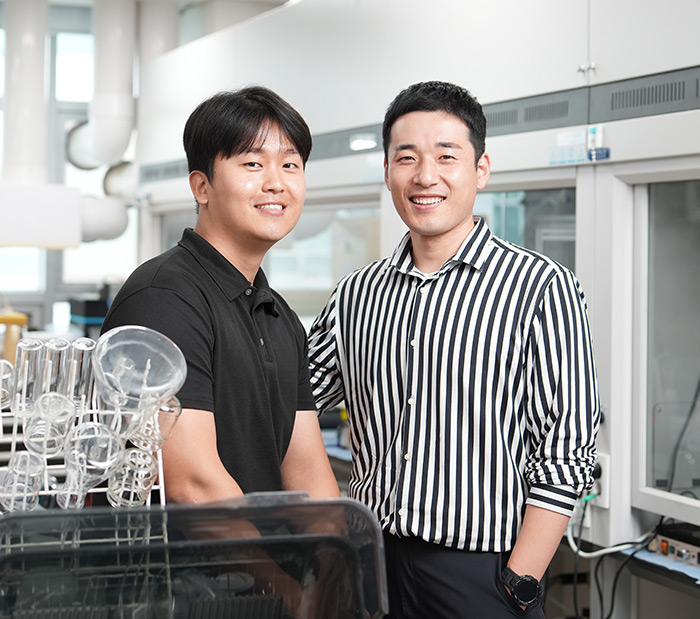
SKKU Advanced Institute of Nano Technology AN, SEONGPIL Prof. ·Ph.D. Daekyu Choi, Dr. Hongseok Jo
SAINT faculty Prof. Seongpil An research team with Highly-sensitive flexible and transparent piezoelectric nanogenerator
Sungkyunkwan University (President Jibeom Yoo) and a research team led by Prof. Seongpil An from the SKKU Advanced Institute of Nano Technology (SAINT) has recently developed a highly-sensitive, flexible, and transparent piezoelectric nanogenerator that can detect microbubbles by cavitation inside pipes and also can convert the kinetic energy of these microbubbles into electrical energy. Piezoelectric nanogenerators, which can be used as a ubiquitous energy source, are considred as a next-generation self-powered energy technology that can addressee energy issues such as fossil fuel depletion and environmental pollution. This research presents that a thin, transparent, and flexible ultra-sensitive piezoelectric nanogenerator was developed using electrospinning, electroplating, electrostatic spraying, and chemical bath deposition techniques. This piezoelectric nanogenerator was engineered to detect micro buoyancy resulting from the physical movement of microbubbles and also efficiently convert it into electrical energy. The research holds promise for the potential application in the plant industry, particularly in systems requiring sensing and energy harvesting of complex piping equipment of various sizes. ※ Cavitation: A phenomenon in which the static pressure of a liquid reduces to below the liquid's vapor pressure, leading to the formation of small vapor-filled cavities in the liquid. ※ Microbubble: Very small bubble with a diameter of approximately less than 100 ㎛. ※ Piezoelectric nanogenerator: An energy harvesting device that can convert external kinetic energy into electrical energy through the action of nanostructured piezoelectric materials. ※ Electrospinning: A fiber production method that uses electric force to draw charged threads of polymer solutions or polymer melts up to fiber diameters in the order of some hundred nanometers. ※ Electrostatic spraying: A voltage-driven process governed by the electrohydrodynamic phenomena where particles are made from a polymer solution. ※ Chemical bath deposition: A method of thin-film deposition (solids forming from a solution or gas), using an aqueous precursor solution. Prof. An's research team (1st author, Ph.D. student Daekyu Choi, co-1st author Dr. Hongseok Jo) developed a flexible and transparent piezoelectric nanogenerator having outstanding sensitivity. This could be contributed to uniformly grown piezoelectric zinc oxide nanowires on the surface of nickel microfibers with high electrical conductivity. Under an external force of 10 N, this nanogenerator demonstrated a power generation performance of 35 V. Notably, even in the presence of ultra-fine buoyancy as low as 0.009 N by the motion of microbubbles, it exhibited a power generation performance of 0.04 V. Furthermore, it confirmed stable energy-harvesting performance even under conditions where external force was repeatedly applied more than 100,000 times, demonstrating excellent mechanical durability. Prof. An, corresponding author of this study, added, “Recently, research and development incorporating multidisciplinary science and technology has been actively focused, so innovative research must continue in the future through active exchange of research knowledge between researchers in various fields.” Lastly, the 1st author of this study, Ph.D. student Daekyu Choi, expressed his intention, “I think that energy-harvesting research, which can transduce kinetic energy wasted in daily life into electrical energy, is a research having enough potential to change the paradigm of the future.” Additionally, co-first author Dr. Hongseok Jo, said, “The highly-sensitive piezoelectric nanogenerator developed here is thought to have a high potential to be used as power sources and sensors for microelectronic devices, so follow-up commercialization research is needed.” The first author of this study, Ph.D. student Daekyu Choi is in the initial phase of doctoral course, and co-first author Dr. Hongseok Jo was recently selected for the ‘National Research Foundation of Korea Creative Challenge Research Project’,. Their outstanding future research activities are highly expected. This study was supported by the National Research Foundation of Korea (NRF) grant funded by the Korea Government (MSIT) RS-2023-00211303, NRF-2021R1A2C2007141, and 2022M3H4A408507611. This study was published on Aug. 30th in Advanced Functional Materials (IF: 19), one of the world-renowned academic journals in the top 5% of the material science field. ※ Title: Transparent, Flexible, and Highly Sensitive Piezocomposite Capable of Harvesting and Monitoring Kinetic Movements of Microbubbles in Liquid (Journal: Advanced Functional Materials, https://onlinelibrary.wiley.com/doi/full/10.1002/adfm.202307607) Schematic of fabrication process and illustration of microbubble detection experiment, detecting microbubbles that occur inside the pipe.
- No. 232
- 2023-10-24
- 1916
-

Medicine LEE, KI YOUNG Prof. ·Dr. Mi-Jeong Kim
The SARS-CoV-2 spike protein induces lung cancer migration and invasion in a TLR2-dependent manner
It has been reported that lung cancer development and progression are induced by genetic mutations and various external factors. Recently, lung cancer genetic data are being used to identify novel factors capable of regulating cancer development and progression, thereby providing therapeutic strategy for the intervention of lung cancers. Severe acute respiratory syndrome coronavirus 2 (SARS-CoV-2) infection can lead to severe outcomes in patients with cancer. It has been reported that patients with lung cancers disproportionately manifest severe COVID-19 with a high rate of hospitalization and death. Notably, the SARS-CoV-2 Spike (S) protein can induce hyper-inflammation in both epithelial cells and macrophages through toll-like receptor (TLR)1/TLR2 or TLR2/6-dependent nuclear factor-kappaB (NF-κB) pathway. However, molecular and cellular evidence on whether the SARS-CoV-2 virus affects the severity of lung cancer patients through TLR1/2 or TLR2/6 signaling remains unclear. In this study, we provide evidence about how SARS-CoV-2 critically affects viral susceptibility and severity in patients with lung cancer. Our data demonstrate that lung cancer patients with up-regulated ACE2, TMPRSS2, TLR1, TLR2, and TLR6 are more likely to be susceptible to SARS-CoV-2 infection than those with down-regulated ACE2, TMPRSS2, TLR1, TLR2, and TLR6, subsequently leading to a more severe SARS-CoV-2 infection followed by promoting cancer progression through TLR2-dependent activation of NF-κB. However, it is still controversial of the role of TLR2 in lung tumor progression because TLR2 orchestrates a tumor suppressor response in early-stage lung cancer through the induction of cell-autonomous and non-cell-autonomous tumor suppressor responses. Although the precise molecular and cellular mechanisms by which TLR2 is functionally implicated in different stages of lung cancer is absolutely required, the current study gives insight into cellular and molecular mechanisms by which SARS-CoV-2 infection influences lung cancer progression in a TLR2-dependent manner. It might contribute to our understanding of the susceptibility to and the severity of SARS-CoV-2 infection in patients with lung cancer. * The results of this research were published in Cancer communications (IF=16.2), a world-class oncology journal, on 2023 Sep 13. This study was performed by Dr. Mi-Jeong Kim (BK21 FOUR in Sungkyunkwan University School of Medicine), Ji Young Kim (a Ph.D. student in Sungkyunkwan University School of Medicine) and Ji Hye Shin (a Ph.D. student in Sungkyunkwan University School of Medicine) as the co-first author. This work was supported by the National Research Foundation of Korea Grants funded by the Korean Government (2023R1A2C1003762 and RS-2023-00217189). *Article: Kim MJ, Kim JY, Shin JH, Son J, Kang Y, Jeong SK, Kim DH, Kim KH, Chun E, Lee KY. The SARS-CoV-2 spike protein induces lung cancer migration and invasion in a TLR2-dependent manner. Cancer Commun (Lond). 2023 Sep 13. doi: 10.1002/cac2.12485 (IF: 16.2). FIGURE 1: SARS-CoV-2 spike protein induces lung cancer migration and invasion in a TLR2-dependent manner.
- No. 231
- 2023-10-12
- 1564
-

Sociology LEE, HAENA Prof.
Extreme Heat May Hasten Cognitive Decline in Vulnerable Populations
Prof. Haena Lee and colleagues published a study in the Journal of Epidemiology and Community Health(IF: 6.3) on the impact of cumulative exposure to extreme heat on cognitive decline among vulnerable groups—particularly Black older adults and those living in poor neighborhoods. The study, one of the first to investigate the decade-long consequences of extreme heat, finds that cumulative exposure to extreme heat can undermine cognitive health, but it does so unequally across the population. July 2023 was the hottest month on record. Extreme heat is the leading cause of weather-related deaths in the U.S., claiming more lives each year than hurricanes, tornadoes, and lightning combined. Young children and older adults are particularly vulnerable to heat-related illnesses such as heat exhaustion and heat stroke. Recent studies suggest that high temperatures may hurt cognitive function, but these studies tend to look at a snapshot of someone’s cognition at a single time point following brief exposure to heat. Less is known about the long-term consequences of heat on cognitive health. As heat waves become more frequent and intense due to climate change and urban heat islands, Lee and her colleagues sought to understand the connection between extreme heat exposure and cognitive decline. They analyzed data from nearly 9,500 U.S. adults ages 52 and older surveyed over a 12-year period (2006-2018) as part of the Health and Retirement Study conducted by the University of Michigan Institute for Social Research, which measures participants’ cognitive function over time. The researchers also looked at socioeconomic measures of the neighborhoods where participants lived. In addition, they calculated participants’ cumulative exposure to extreme heat (the number of days in which the heat index reached or exceeded a location-specific threshold) during this 12-year period based on historical temperature data from the CDC’s National Environmental Public Health Tracking Network. They found that high exposure to extreme heat was associated with faster cognitive decline among residents of poor neighborhoods, but not for those in wealthier neighborhoods. Moreover, cumulative exposure to extreme heat was associated with faster cognitive decline among Black older adults, but not white or Hispanic older adults. One possibility is that affluent neighborhoods tend to have resources that can help in a heat wave—things like well-maintained green spaces, air conditioning, and cooling centers. In disadvantaged neighborhoods, these resources may not exist. Another explanation for this pattern of findings is that Black older adults may have disproportionately experienced systemic disadvantages throughout their lives due to structural racism, segregation, and other discriminatory policies, all of which may affect cognitive reserve. The researchers urge local governments and health officials to develop policies and tools that identify residents who are susceptible to extreme heat, empower at-risk communities, map their specific needs, and develop targeted support and increased communication with these populations. Paper: Cumulative exposure to extreme heat and trajectories of cognitive decline among older adults in the USA •Journal: Journal of Epidemiology and Community Health •Author: Haena Lee, Eunyoung Choi, Virginia Chang •DOI: http://dx.doi.org/10.1136/jech-2023-220675
- No. 230
- 2023-09-26
- 1565
-

Biophysics KIM, INKI Prof. ·Kim Yangkyu, Aleksandr Barulin Researcher
Development of hyperspectral imaging and multiplexing sensor technology using a metasurface
Professor Inki Kim's research team from the Department of Biophysics at Sungkyunkwan University, in collaboration with Professor Luke Lee from Harvard Medical School, Professor Junsuk Rho from POSTECH, and Professor Inhee Choi from University of Seoul, has developed a hyperspectral imaging technology using a metasurface chip for real-time monitoring of cells. Hyperspectral imaging technology is a technique that allows the simultaneous observation of both the shape and spectral signals of objects through a microscope. Through this technique, when observing objects, it is possible to obtain both spatial and temporal information about the object's location and chemical composition simultaneously. The ability to detect and monitor various biological processes occurring within cells, as well as chemically related substances directly or indirectly, in real-time from within or outside the cell, is considered a crucial technology for enabling early diagnosis of various diseases and the development of therapeutic agents. In this study, a technology was developed that utilizes Plasmonic Resonance Energy Transfer (PRET) to detect the molecular fingerprint of target chemical substances through a label-free approach. The sensor technology based on Plasmonic Resonance Energy Transfer (PRET) exploits the phenomenon of energy transfer between plasmonic scatterers and absorbing molecules. This allows the extraction of chemical information or electronic state of molecules as a form of plasmonic quenching dips. However, conventional nanoparticle-based PRET sensors have limitations due to the restricted scattering characteristics of nanoparticles, allowing measurement of only one type of molecule at a time. Furthermore, there has been a challenge in real-time monitoring of substance transfer occurring between cells and within cells due to these limitations. Additionally, in order to accurately and in real-time monitor the spatial and temporal changes within cells, a more precise chip-based device implementation is required. The research team has developed hyperspectral imaging and multiplexing sensor technology using a metasurface, an ultra-thin flat optical component with a thickness of just one-thousandth of a hair's width (Figure 1). A metasurface refers to a two-dimensional sub-wavelength structures that can manipulate wave properties at the interfaces. The metasurface chip can manipulate the scattering characteristics of light and has been utilized to create optical components that scatter only the desired wavelengths of light in the visible spectrum (Figure 2). The team confirmed that the metasurface chip can simultaneously detect different types of molecules, such as cytochrome and chlorophyll, which play crucial roles in the metabolism of animal and plant cells, respectively. Cytochrome is a crucial enzyme involved in electron transport chains and serves as an indicator of cellular health, while chlorophyll acts as an optical antenna, absorbing light energy for photosynthesis in plant cells. Furthermore, the research team has introduced a technology that allows real-time quantitative detection of reactive oxygen species secreted by living cells using this metasurface chip. They developed a technique on the metasurface chip where normal cells, cancer cells, and drug-treated cancer cells were cultured, and the reactive oxygen species produced by each cell were monitored using a label-free approach (Figure 3). Over the course of an hour, they monitored the amount of reactive oxygen species emitted from the same positions within the cells, observing a higher secretion of reactive oxygen species in the order of drug-treated cancer cells, general cancer cells, and normal cells. This technology is anticipated to be applied as a drug screening platform in the future. Through this study, the metasurface chip-based hyperspectral imaging and sensor technology that has been implemented hold the potential not only for detecting various chemical substances within cells but also for real-time monitoring of cellular secretions used in intercellular communication. The results of this study were officially published in the highly prestigious journal Advanced Materials (IF = 32.086) on August 10th and have been recognized for the excellence of the research, being selected as the cover article for that issue. ▲ Figure1. hyperspectral imaging and multiplexing sensor technology using a metasurface ▲ Figure4. Advanced Materials Cover Photo
- No. 229
- 2023-09-19
- 1965
-
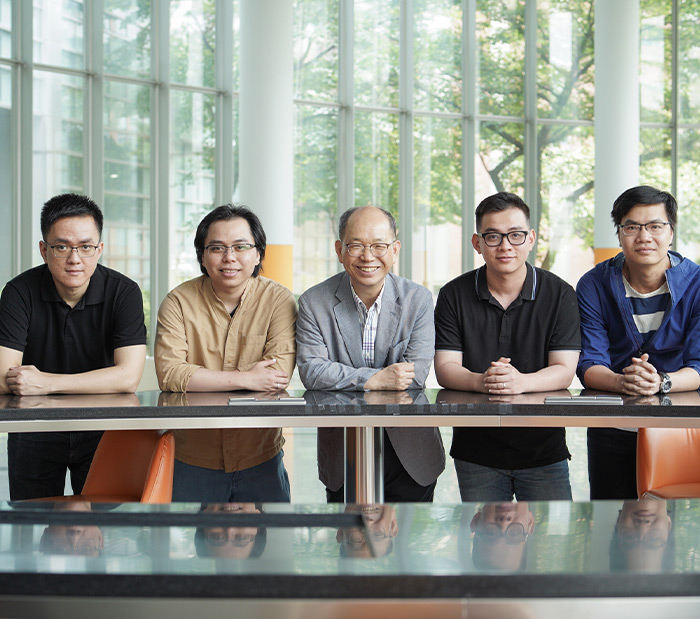
Semiconductor Systems Engineering JEON, JAE WOOK Prof.
Developing a Deep Learning System for the Detection of Motorbike Helmet Law Violations
The use of video surveillance to implement automated detection systems for motorcycle helmet usage has the potential to significantly improve the efficacy of educational and enforcement efforts, which will contribute to increase road safety. Even though these systems might offer some benefits, there are other features of the currently used detection methods that still need to be improved. For instance, the technologies that are now in use frequently require additional assistance to localize specific motorcycles within the field of view precisely, and they may not be able to discern between drivers and passengers regarding the use of helmets. FIGURE 1: Detecting Violation of Helmet Rule for Motorcyclists To promote the research and development of such systems, the AI City Challenge provided Detecting Violation of Helmet Rule for Motorcyclists Competition (Track 5) for the first time in its 7th edition in June 2023, in Vancouver, Canada. The challenge was a part of Computer Vision and Pattern Recognition (CVPR), the leading annual academic conference in the field of artificial intelligence and computer vision. Each participant was to build a system that could determine whether individual motorcycle riders were wearing helmets within 5 months. FIGURE 2: The pipeline of the framework A research team led by Professor Jae Wook Jeon competed with 38 other teams worldwide and won the competition with 1st place. The team was able to achieve the highest detection score by developing a two-step artificial intelligence technology. This system first finds the position of many motorcycles and the riders of those motorcycles, then determines whether the riders of each motorcycle are wearing helmets. FIGURE 3: The diagram of data conversion for training both steps. With this success, the technological expertise of Professor Jae Wook Jeon's team can be showcased to the worldwide research community, and the technology that was produced is anticipate to be utilized extensively in the development of future intelligent traffic surveillance systems. Along with automatic detection of regulation violators, many problems such as lane detection, crossroad and joint detection, signal and sign detection, automatic parking, and recognition of surroundings must be solved for future smart cities. Professor Jae Wook Jeon’s team will continue research in the area of intelligent image processing in order to make dreams come true. FIGURE 4: Visualization of results. Various scenes have different outside environments.
- No. 228
- 2023-08-24
- 2503
-
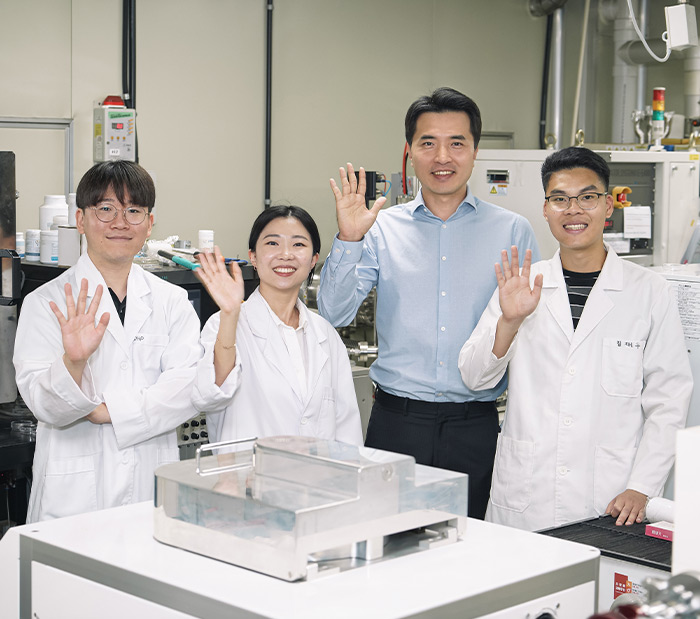
Electronic and Electrical Engineering YU, WOOJONG Prof.
Prof. Woo Jong Yu's research team implements an artificial brain neural circuit that self-learns like the human brain
Sungkyunkwan University's Department of Electrical Engineering Professor Woo Jong Yu and Department of Energy Sciences Professor Young Hee Lee's joint research team developed an artificial brain cell device that operates equally with human brain cells through collaboration with Senior Researcher Eui Yeon Won of Hyundai Motor Company. A self-learning artificial brain neural network circuit mimicking the neural network structure was implemented. Current artificial intelligence algorithms use hundreds of large-capacity supercomputers and consume enormous amounts of electrical energy. On the other hand, the human brain implements intelligence using very little energy in a small size of about two fists. If an artificial brain that operates on the same principle as the human brain is created, artificial intelligence that operates on a small smartphone will be possible. In fact, ‘neuromorphic systems’ that mimic the human brain are being actively researched, and ‘Memristor’, a new concept memory that can precisely imitate the human brain, is attracting attention. *Neuromorphic Systems: Computers designed in the structure of Neuromorphic systems that imitate the human brain. Conventional computers follow the von Neumann architecture, which is fast for sequential calculations like mathematical operations but not suitable for the parallel calculations required for artificial intelligence. For instance, AlphaGo achieved parallel computation by connecting thousands of computers in a von Neumann structure, leading to high power consumption. In contrast, neuromorphic systems are designed to perform parallel computations efficiently by connecting thousands of small CPUs and memory units, similar to human brain cells, resulting in high AI performance with minimal power consumption. *Memristor: A portmanteau of "memory" and "resistor." Unlike regular resistors, memristors store memory by changing resistance values in response to external input and maintain these changes for a certain period. Unlike conventional memory components that remember only 0/1 states, memristors can remember over 100 states. This property enables a single memristor to replace multiple memory units, significantly reducing the size and power consumption of artificial neural networks. Memristor is a new device that stores memories by changing the resistance value, and is used to mimic ‘synapse’, a connection between brain cells and a memory storage organ. In 2016, Professor Yu's research team first developed a flash memory-based 'two-electrode-floating gate-memristor' with excellent reliability, and used it to simulate the memory storage method of synapses (Nature Commun. Doi:10.1038/ncomms12725 ). However, in order to fully implement the human brain function, a brain cell mimic device that performs calculation is additionally required. *Flash Memory: A non-volatile memory that retains stored information even when power is lost. It's widely used in portable devices like smartphones and digital cameras due to its high reliability. In this study, the research team developed 'multi-electrode-floating gate-memristor' for the first time and succeeded in mimicking the operation of brain cells (neurons) (Figure 1). Electrical signals are exchanged between brain cells connected in various ways. At this time, the brain cells accumulate the electrical signals received in the body (membrane potential) (leakage summation function), and when a certain amount of electrical signals are accumulated, a new electrical signal is generated (ignition). function). The research team first implemented artificial brain cells that perfectly follow the movements of these brain cells by using 'multi-electrode-floating gate-memristor'. The potential of the floating gate of 'multi-electrode-floating gate-memristor' simulated the membrane potential of brain cells to simulate the leaky-integrate function, and measured the amount of accumulation of electrical signals through a comparator connected in a sequential circuit and The electrical signal ignition function (fire) was simulated. 'Multi-electrode-floating gate-memristor' is a structure with several electrodes (multi-electrode), and by using this, it was possible to simulate the multi-pronged connection between brain cells. The research team next connected several 'multiple electrodes-floating gates-memristors' to each other to simulate self (unsupervised) learning of the connection structure between human brain cells (Figure 2). To this end, 'multiple electrodes-floating gates' An artificial brain neural network that connects 12 ‘gate-memristor’-based artificial brain cells (computing elements) (9 inputs, 3 outputs) with 27 ‘floating gate-memristor (2016)’ artificial synapses (memory elements). circuit was constructed. The artificial brain neural network circuit constructed in this way learned the classification of direction lines, which is the primary visual information processing function (vision cortex 1) of the human brain, on its own (unsupervised) without human intervention, and with the learned intelligence, perfectly distinguished the direction of various direction lines. gave In addition, in the learning simulation of human handwritten digit data (MNIST dataset), it self-learned (unsupervised) without human intervention and showed a high accuracy of 83%. Professor Woo Jong Yu said, “This research is significant in that it has realized active artificial intelligence that learns on its own (unsupervised) like humans through the development of artificial brain cells, synapses, and artificial brain neural network circuits that operate in perfect harmony with the human brain. “Unlike conventional supervised learning, which is confined within the boundaries of human knowledge, unsupervised learning learns on its own through data, so it is possible to implement creative artificial intelligence that can derive new knowledge that goes beyond the level of human knowledge.” *The results of this research were published in Nature Communications (IF = 17.694), a world-class science and technology journal, on May 27, and the Devices section of the 'Editors' Highlights page' selects the best papers among the latest was introduced on 14 June. * Multi-neuron connection using multi-terminal floating–gate memristor for unsupervised learning (저널: Nature Communications, DOI: https://doi.org/10.1038/s41467-023-38667-3, Editors’ Highlights page - Devices: https://www.nature.com/collections/bjiiabbacg) ▲ Figure 1. [Left] Connection structure between brain cells in the human brain. [Right] Artificial brain cell structure using ‘multi-terminal floating gate memristor’ that mimics human brain cell and connection structure. ▲ Figure 2. [Upper left] Classification of direction lines, the primary visual information processing function (visure cortex 1) of the brain [Right] 'Artificial brain neural network circuit that connects 12 brain cell (computation) elements and 27 synapse (memory) elements'
- No. 227
- 2023-08-11
- 2454
-
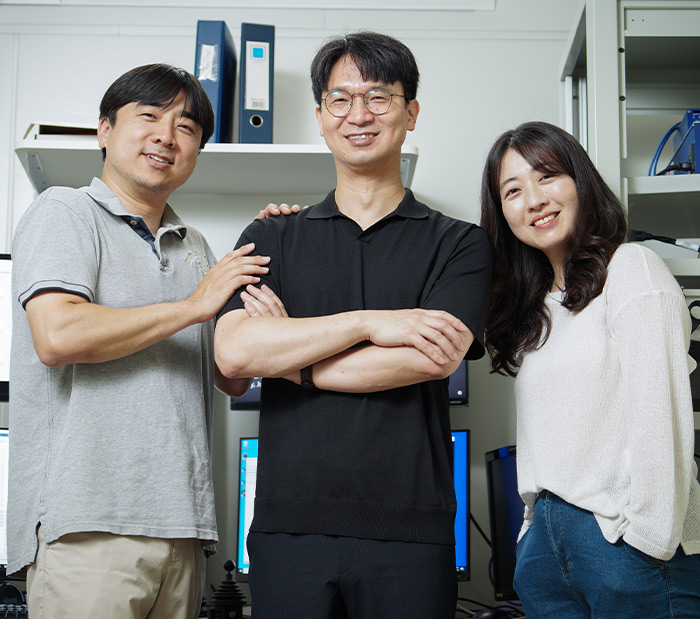
Biomedical Engineering LEE, JOONYEOL Prof. ·JeongJun Park, Seolmin Kim
Prior Knowledge Boosts Sensorimotor Reactions through Changes in Sensory Cortical Neural Activity
Animals use sensory cues to adapt and excel in their environments. Among them, primates, including us humans, heavily lean on visuals. Even if clear visual information is missing, the brain combines what it sees with memories, guiding the right reactions. Yet, the exact mechanism of how the brain processes this combined info is still under investigation. Joonyeol Lee's team from the Department of Biomedical Engineering has unveiled that our past experiences play a role in adjusting brain activity, particularly in the sensory parts of the cerebral cortex. This adjustment sharpens an animal's ability to trace moving items, an insight derived from studying rhesus monkeys' behaviors and neural patterns. Interestingly, when visuals indicating movement are faint or unclear, monkeys are notably sharper at tracking them when the motion is predictable. However, when the motion's unpredictable, their tracking tends to falter. This behavior matches the shifts in brain activity in a region known as area MT (middle temporal area). In essence, activity in the area MT appears to incorporate both the motion prediction and the actual visuals, echoing the improvement in tracking eye movements. Joonyeol Lee noted that area MT does more than just pass along visual details. It processes this data differently based on past experiences, shaping behavior in the process. This study, funded by the Institute for Basic Science (IBS-R015-D1), was released online in 'Science Advances (IF 13.6)' on July 7th. Both JeongJun Park (now pursuing his PhD at Washington University in St. Louis) and Seolmin Kim were the co-first authors. The research was a collaborative effort with assistant professor HyungGoo R. Kim of the same department.
- No. 226
- 2023-08-01
- 2199
-
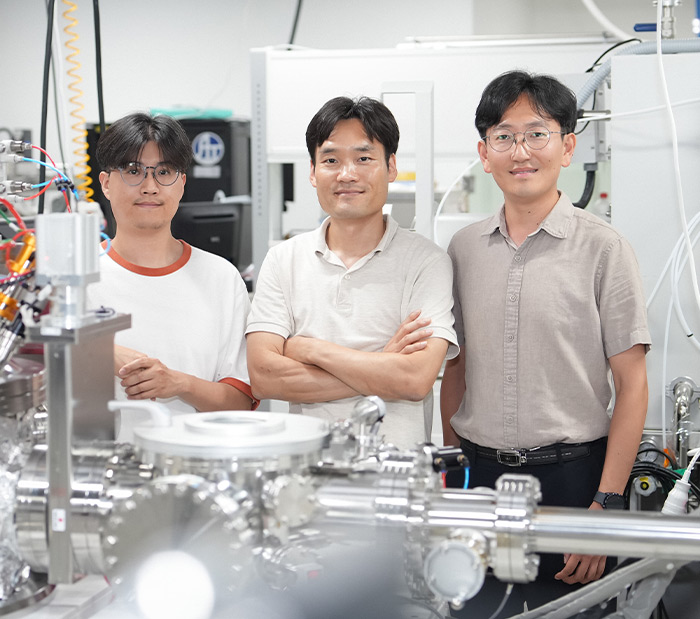
Energy Science CHOI, GYUNGMIN Prof. ·Kyung-Hun Ko : Young-Gwan Choi
Observed a phenomenon of an electron curve like a pitcher control a trajectory of a curved ball
Prof. Gyung-Min Choi’s team (co-1st author: Young-Gwan Choi, co-1st author: Kyung-Hun Ko) at Sungkyunkwan University and Prof. Hyun-Woo Lee’s team (co-1st author: Daegeun Jo) at Postech found that electron has a curved trajectory by the orbital Hall effect. Like a pitcher control a trajectory of a curved ball, scientists want to control a trajectory of electrons inside electronic devices. Prof. Choi’s research team found that the trajectory of electrons can be controlled by the orbital angular momentum. Prof. Choi said that this research demonstrate that angular momentum of electrons can be controlled. And this mechanism can be applied for a low power operation of magnetic memory. This work was supported by the junior researcher support program, and it was published on the Nature at July 6th. Title: Observation of the orbital Hall effect in a light metal T
- No. 225
- 2023-07-17
- 2537
-
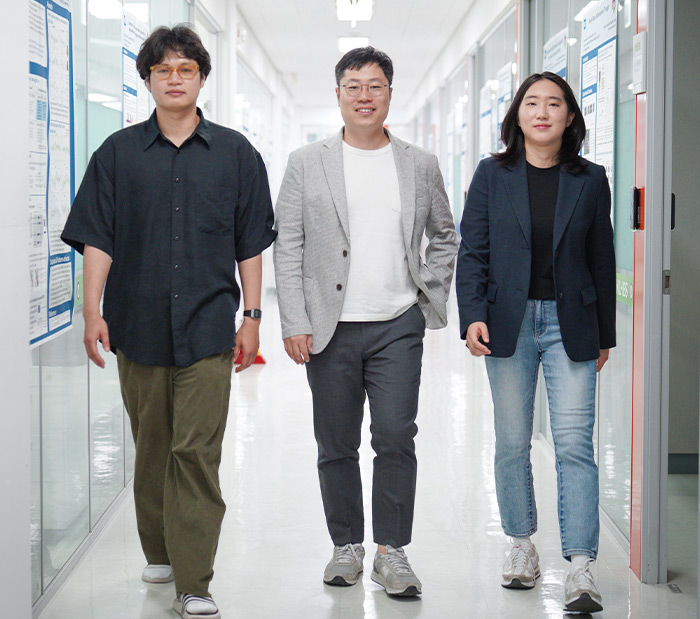
Biomedical Engineering WOO, CHOONG-WAN Prof. ·Jungwoo Kim, a doctoral student at Sungkyunkwan University
IBS Center for Neuroscience Imaging Research develops a predictive model of rumination based on fMRI
"Rumination" refers to the state characterized by preoccupation with a specific thought or emotion. It resembles a cow chewing its cud repeatedly, as we "ruminate" over certain thoughts or feelings. Often, this involves incessant dwelling on negative situations, problems, or worries. This repetitive pattern of thought and fixation on negative emotions can contribute to mental health conditions such as depression or anxiety. Thus, researchers have recognized rumination as a significant risk factor for depression. The tendency for rumination varies among individuals. It has been hypothesized that this individual difference of rumination is associated with the unique brain connectivity patterns of each person, although this has not been clearly elucidated. To address this, Prof. Choong-Wan Woo's research team from the Department of Global Biomedical Engineering at Sungkyunkwan University, in collaboration with Prof. Tor Wager's research team developed a predictive model rumination. They applied machine learning to functional magnetic resonance imaging (fMRI) data obtained from healthy individuals during rest. The brain-based predictive model demonstrated its effectiveness in predicting the severity of depression in depression patients as well. Importantly, this study revealed the significant role of the dorsomedial prefrontal cortex within the default mode network in predicting the level of rumination. "The pattern of thought flow during rest reflect important aspect of our mind, and this study shows that the tendency to think negatively can be decoded from brain connectivity," said Prof. Choong-Wan Woo, who led the study. “As these findings build, we hope to use brain imaging to monitor and manage mental health in the future." The first author of this study, Jungwoo Kim, a doctoral student at Sungkyunkwan University, stated, "This study is clinically and scientifically significant as it demonstrates which brain regions and their connectivity underlie individual differences in the process of rumination." This research was supported by the Institute for Basic Science (IBS-R015-D1), the National Research Foundation of Korea (2019R1C1C1004512), and BrainKorea21 Four. This study was published on June 15, 2023 in the world-renowned journal Nature Communications (IF 17.694).
- No. 224
- 2023-06-29
- 2352
-
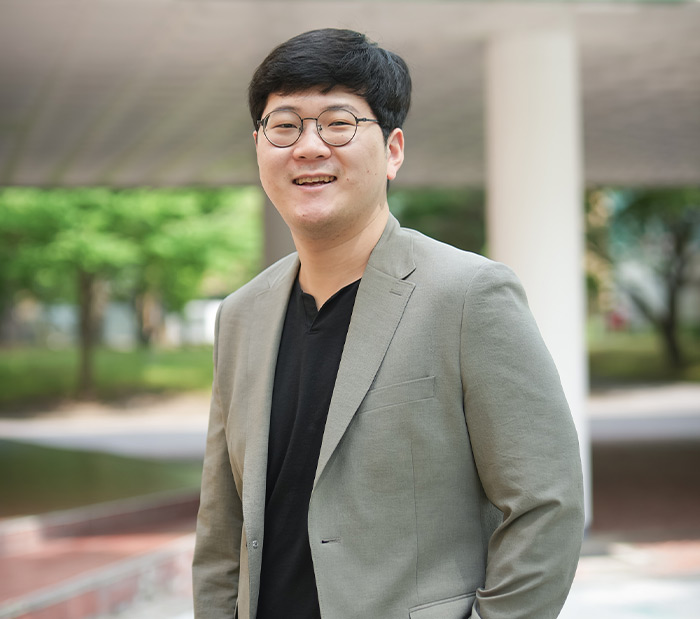
Integrative Biotechnology KIM, HUI-KWON Prof. ·co-authors Jiyun Kim and Jisung Kim
A state-of-the-art artificial intelligence model for designing the next-generation gene editing tool called Prime Editor
The research team, led by Professor Hui Kwon Kim from the Department of Integrative Biotechnology, in collaboration with co-authors Jiyun Kim and Jisung Kim, has successfully developed a state-of-the-art artificial intelligence model for designing the next-generation gene editing tool called Prime editor. This groundbreaking work was conducted in partnership with Professor Hyongbum Henry Kim's team from Yonsei University College of Medicine. The research findings were published in the prestigious scientific journal "Cell" on May 11, 2023. This research received support from the National Research Foundation of Korea (2020R1C1C1003284) and the Korea Drug Development Fund (HN22C0571). CRISPR-Cas9, an artificial enzyme and gene editing tool, allows for targeted cleavage and precise modification of specific genes. It serves as a fundamental technology for gene therapy, genetic modification of plants and animals, and plays a crucial role in genome-wide functional screening. The pioneering scientists responsible for developing gene editing technology using CRISPR-Cas9 were awarded the Nobel Prize in Chemistry in 2020, and this field continues to garner significant attention worldwide. While gene editing using CRISPR-Cas9 is associated with limitations such as cell toxicity, nonspecific gene corrections, and unintended byproduct generation due to double-strand DNA (DSB) cleavage, a groundbreaking technology known as Prime editing has been developed. This innovative approach allows for the introduction of new genetic information into target DNA sites without the need for DSBs (Anzalone et al., 2019, Nature). The Prime editor system consists of a Prime editor, which is a Cas9 nickase fused with a reverse transcriptase, and a prime editing guide RNA (pegRNA) that plays a crucial role in determining the efficiency of prime editing. This advanced approach is considered significantly safer and more efficient compared to traditional gene editing methods. However, the process of prime editing is complex, and the wide range of options for pegRNA designs presents challenges in its application. To address these challenges, the research team has generated a dataset on prime editing efficiency induced by over 330,000 pegRNAs over a period of approximately three years, representing the largest dataset in the field. Through systematic analysis of this dataset, the team has successfully identified key factors that determine prime editing efficiencies. Furthermore, they have developed artificial intelligence models, namely DeepPrime, DeepPrime-FT, and DeepPrime off, which enable the prediction of pegRNA efficiency and accuracy by inputting the target DNA sequence and the desired edit. Previously, the utilization of the prime editor required the synthesis and experimental validation of dozens to hundreds of pegRNAs, which was time-consuming and labor-intensive. With these cutting-edge models, researchers can now easily design the optimal pegRNA without the need for wet experiments, facilitating advancements in the field of genome editing.
- No. 223
- 2023-06-09
- 2778


